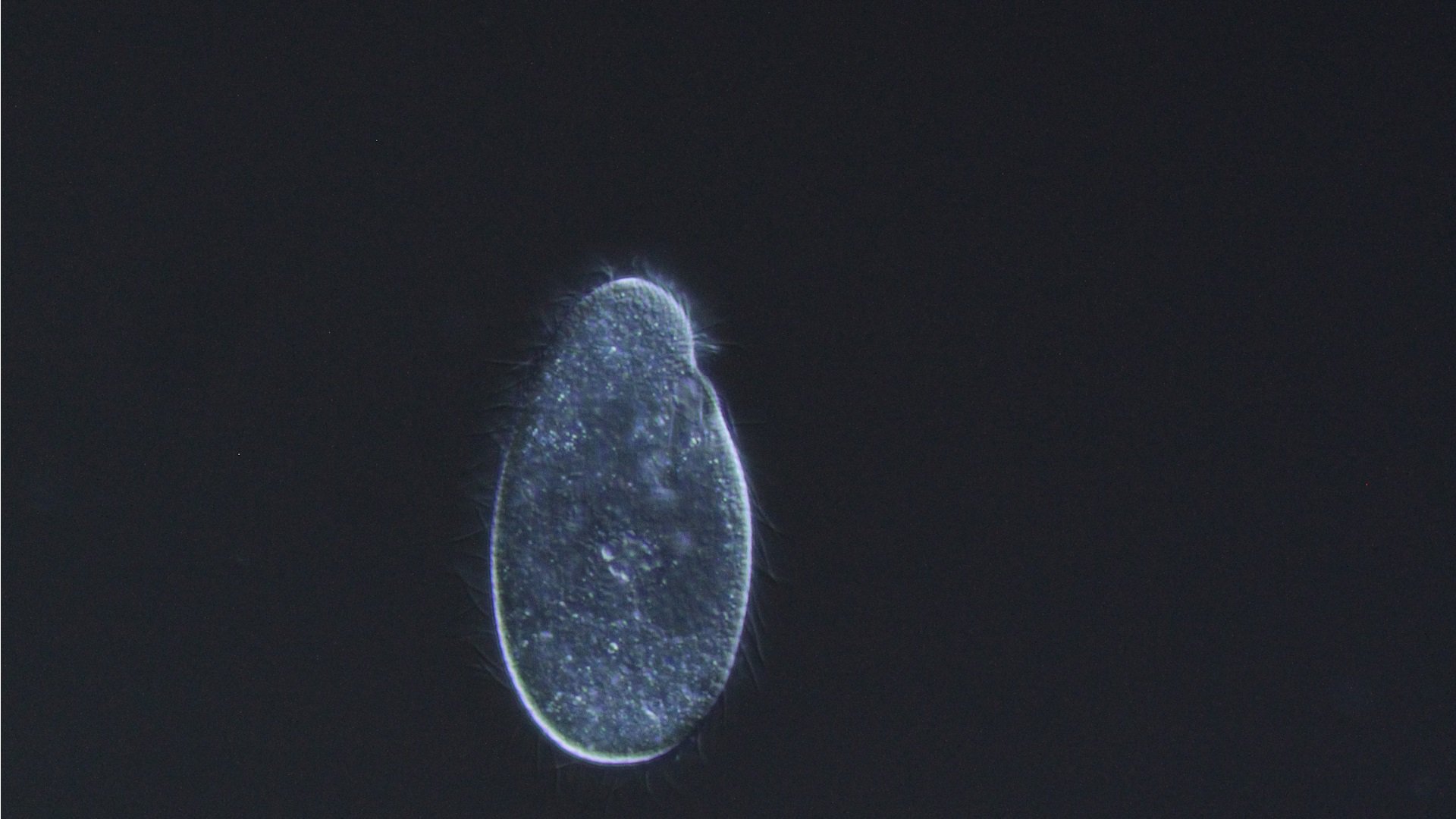In almost all ditches, swamps, lakes and other freshwater environments ciliates can be found. Colpidium striatum is an egg-shaped animal of 50 to 100 micrometres with tiny hairs (cilia) in long rows all over the outside of the cell. The side of the cell has a small groove where food particles are taken up.
In almost all ditches, swamps, lakes and other freshwater environments ciliates can be found. Colpidium striatum is an egg-shaped animal of 50 to 100 micrometres with tiny hairs (cilia) in long rows all over the outside of the cell. The side of the cell has a small groove where food particles are taken up.
selective sweeper
Ciliates such as C. striatum feed on small algae and bacteria. It was previously thought that they just took in all suitable food items with their cilia, but they turn out to be more picky types. For example, C. striatum actually favours certain species of Klebsiella bacteria in its diet over E. coli.
short-haired outer engine
The phylum Ciliophora consists of about 4,500 species of ciliates. However, scientists believe that there are many more species that have not been described. What all these species have in common is that their entire micro-body is covered with microscopic hairs, the cilia. Morphologically, these cilia are very similar to flagella, the tiny lash-like tails that some algae, bacteria, but also human sperm cells have. Flagella are generally much longer than cilia. Furthermore, cells usually have only one or two flagella, while cilia can often be found in long rows across the entire cell surface. But the biggest difference is the way of moving. Flagella move like a propeller, cilia make a coordinated, undulating movement. The cilia of C. striatum for example beat in a unifying motion if the organism wants to move forward. This allows ciliates to move quickly and with great agility through the water.
splendid sludge staff
Colpidium striatum and other ciliates are often found in nutrient-rich or contaminated waters. There they feed on the diverse bacterial community. This link in the food chain is cleverly used by people in a useful application. Bacteria, ciliates and several other microbe groups perform one of the important steps in wastewater treatment. The purification process of wastewater roughly consists of four steps: filtering (one), biological purification (two and three) and chemical purification (four). In the second step of the purification, the filtered wastewater is brought into contact with activated sludge. "Activated" refers to the microbial activity: many types of bacteria and ciliates, but also other (micro-)animals such as amoebae, nematodes and water fleas form a small, purifying ecosystem that collectively filters an immense amount of waste from the water. In this step, mainly carbon-rich substances such as human feces are broken down. In the sedimentation tank, the community of organisms sinks to the bottom and the water is passed on to the next purification step. The valuable sludge is used again for the next load of water.

